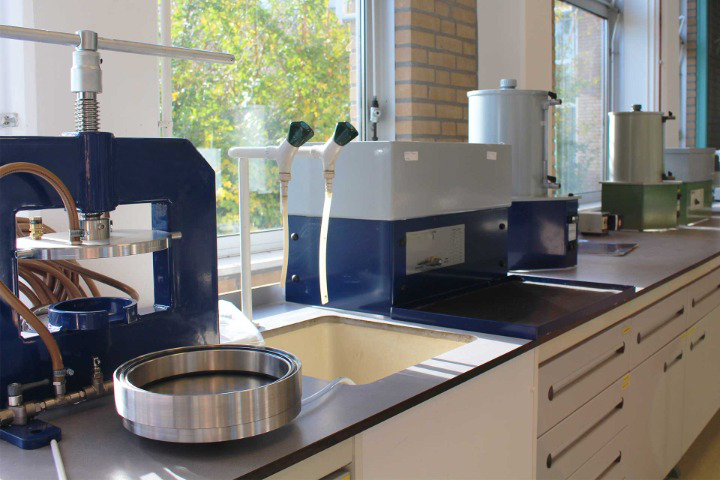



Empire United Ltd. provides a diverse array of robust augers and sampling tools designed for soil research purposes. Beyond their capacity to extract both disturbed and undisturbed soil samples at various depths, including above and below the groundwater level, our equipment serves the additional function of facilitating the establishment of monitoring wells.
More information
Precise measurement data is paramount during the execution of soil investigations in the field. Empire United Ltd. presents an extensive selection of dependable and top-notch measuring instruments tailored for on-site usage.
More information
Following the collection of soil samples in the field, the subsequent phase commences - conducting analysis within the laboratory setting. Our range of tools facilitates precise and efficient execution of your research tasks, encompassing all steps from soil sample preparation and blending to measurement and comprehensive testing.
More information
In our increasingly intelligent world, the significance of measurement and monitoring lies in their alignment with meaningful actions. Within our understanding of 'smart,' it encompasses more than just the accumulation of extensive data; the data's value rests in its relevance and its connection to actionable steps. Empire United Smart Monitoring is fully equipped to provide the essential resources, cutting-edge technology, and comprehensive services required to generate pertinent data for your needs.
More information
Empire United Ltd. not only furnishes the essential tools and specialized knowledge to execute both of these soil investigation methodologies, but our equipment also empowers you to seamlessly integrate them in unprecedented ways. Whether you seek to establish a drilling fleet, enhance your drilling system with a CPT (Cone Penetration Testing) add-on, or institute a dedicated CPT program, we deliver an all-encompassing solution catering to your site investigation requisites.
More information
The vitality of healthy soil extends to all of us. When our soil maintains its health, it fosters optimal crop growth and minimizes plant disease challenges. A robust soil structure characterized by crumbliness, efficient drainage, and moisture retention is key. Through efforts directed at soil health, issues like compaction, flooding, drought, erosion, and compromised crop growth can be preemptively addressed. Furthermore, a healthy soil serves as a habitat for soil organisms, thereby contributing to overall biodiversity.
More information
Starting as a village blacksmith and evolving into a pioneer of advanced methodologies for soil and water research, our complete range of products and services reflects the culmination of years of skillful craftsmanship, diligent research, and profound expertise.
With a global reach, our distributors and clients span across every corner of the world, with our offerings being applied on all five continents.
Our commitment extends to safeguarding the planet for future generations. We are dedicated to improving upon the state in which we received this Earth. Embracing corporate social responsibility, we diligently align with the Sustainable Development Goals (SDGs) to make a positive impact.